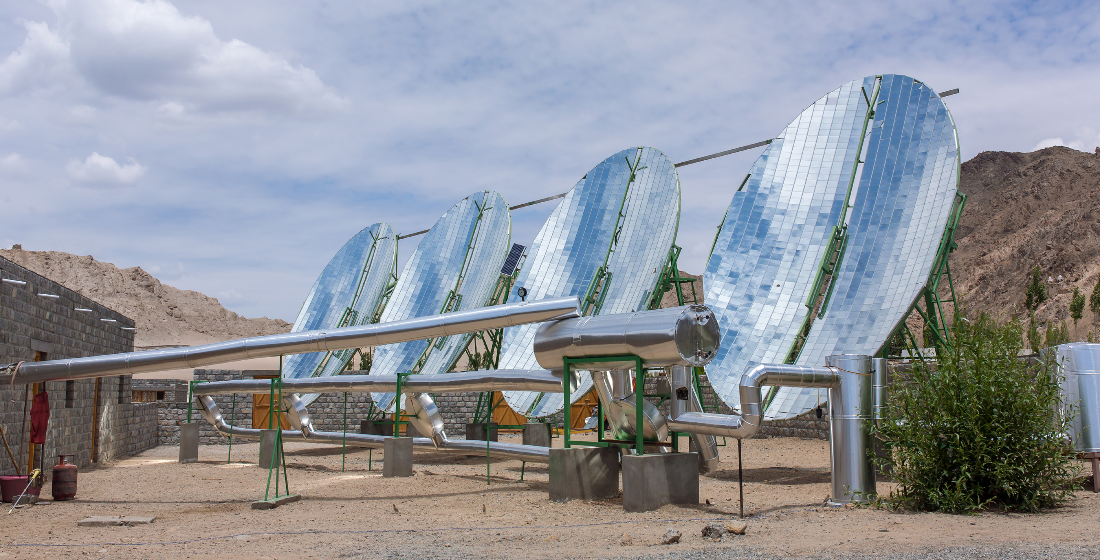BII’s five-year goal: doubling up climate and gender finance
Recently rebranded from Commonwealth Development Corporation (CDC) to British International Investment (BII), does the replacement of development with investment signal a more commercial agenda at the UK DFI?

For the next five years British International Investment (BII), the UK’s development finance institution, promises to go more bullish on climate finance and incorporate a gender lens in its investment strategy. The strategy is in line with the growing influence of ‘just transition’ debates in development finance – an agenda that aims to factor in the impact on local communities and vulnerable groups in the emerging markets.
BII’s five-year strategy is to target 30% of all new investments to qualify as climate finance, test new investment approaches for natural capital solutions, adaptation and resilience, and provide climate finance to the Indo-Pacific. On the gender front, BII aims to have 25% of all new investments to qualify under the 2X Challenge as ‘gender lens’ finance.
To realise these objectives at scale, BII will step up its core investment programme to around £9 billion over the next five years, allocating at least £3 billion in climate finance to support emerging economies in Africa and Asia to combat the climate emergency. “This makes us one of the world’s largest climate finance investors in Africa,” says Ellen Brookes, executive, climate change, BII.
BII has invested $1.2 billion in climate finance in the last five years, and aims to allocate more than double that in the next five. The £3 billion of climate finance will be invested in renewable power, infrastructure, transport, manufacturing, agriculture, and forestry. “There are investable opportunities in all sectors of the economy, as all sectors need to be supported to decarbonise and become more resilient to future climate shocks,” says Brookes. “Finance is needed to both reduce and remove greenhouse gas emissions and mitigation, but also to increase resilience to extreme weather and changing climatic conditions. This adaptation finance is crucial for all countries, but particularly the markets in which we invest, and makes good business sense.”
Russia’s war impacting climate finance
The sanctions placed on Russia and consequently Western Europe clamouring to find alternative sources of energy for Russian oil, gas and coal has cast shadow over the net-zero commitments made at COP26 last year. The need to bolster energy security in Europe appears to have momentarily detailed the energy transition agenda. Half a year after BII announced its climate ambitions at COP26, it finds itself in a challenging market in Europe – a struggle shared by other DFIs and MDBs.
“The war in Ukraine has further highlighted the importance of moving away from a reliance on fossil fuels, not just for those climate considerations but also for energy security, and it shows how the pace of the energy transition must further accelerate. We remain focused on supporting our markets to transition to net zero resilient economies and our new strategy enhances our ability to do this,” says Brookes. “Specifically on sanctions, there is a limited direct impact on our investees given our geographic mandate however we are mindful of the ongoing challenges related to commodity prices and supply chains that have wider repercussions in a number of sectors, not least agriculture. This is felt more acutely in certain markets like Egypt and Kenya that have a reliance on wheat imports.”
Gender-inclusive financing
BII’s aim to invest at the crossroads of gender and climate comes with its own set of challenges, particularly in the emerging markets. Key barriers include lack of data and/or systems to collect gender data: within BII’s intermediaries, for example, banks, Nonbank financial institution (NBFIs) and fund managers. “This hinders the ability to develop products or investment strategies that target women entrepreneurs or gender-smart enterprises,” says Jen Braswell, director, gender and diversity finance, British International Investment.
Gender lens investing in climate finance also suffers from higher perception of risk. “This is linked to unconscious bias, despite growing evidence that women-owned or women-led businesses and gender-balanced fund managers perform better commercially and against ESG and impact metrics,” observes Braswell. The ticket size also poses as a potential barrier since many women-owned businesses are currently at a very early stage or smaller enterprise size in emerging markets.
“We do not consider Gender-Smart climate finance as riskier than any other investments we make. In fact, the opposite is often true,” says Brookes. “Climate finance investments are less exposed to physical and transition risks which could impact the value of their investments. While investing in women has shown to be smart business, as it helps grow a company’s competitiveness, solidify its supply base, and improve its human capital.
According to Brookes, BII has substantial risk appetite and considerable flexibility in providing capital, including via gender-smart climate finance. “We can invest growth capital, which targets higher returns, or catalyst capital which takes on even higher risk, in exchange for pioneering enhanced development impact, depending on the nature of the investment opportunity,” adds Brookes.
Last year at COP26, the DFI announced a £200 million Climate Innovation Facility, which is a pool of concessional finance that can blend with their Catalyst investments to support the growth of technologies that can help communities deal with the impacts of climate change, such as drought resistant agriculture and sustainable forestry, in markets where private investors have been reluctant to take on the risk alone. “Depending on the situation all of these capital types could be considered for a Gender-Smart Climate Finance investment,” says Brookes.
The DFI uses the 2X investment framework to recognise investments that are positive for women – starting with the 2X Criteria as the basis for its investment decision. “We then assess each deal every two years to understand how they are improving against (or falling behind) the criteria thresholds,” informs Braswell.
For example, some gender inclusive climate finance investments include Greenlight Planet (GLP), providing off-grid solar home solutions in Africa. The project has qualified for the 2X challenge based on GLP’s female customer reach and high representation of women in senior management. BII has also invested in Green Growth Equity Fund (GGEF), touted to be India’s first dedicated climate change fund, which invests across renewable energy, e-mobility, energy efficiency, wastewater and waste management. “This fund is 2X qualified as they have committed that at least 30% of their portfolio will meet 2X challenge criteria. They have also committed to meeting employment criteria themselves, as 40% of their staff are women,” says Brookes. As per the new strategy, BII is also monitoring how many of the funds’ new investments qualify as both climate and gender finance.





